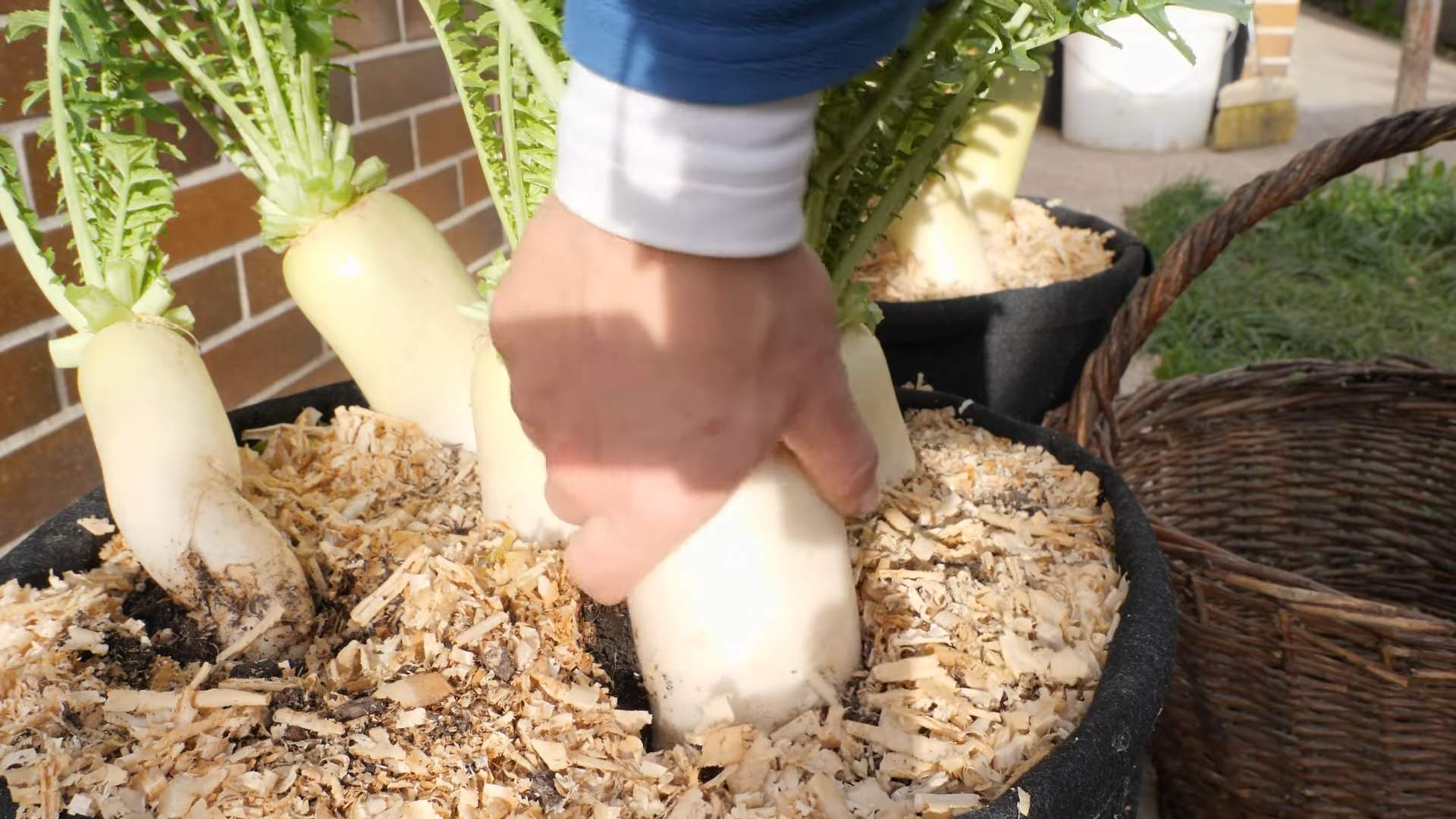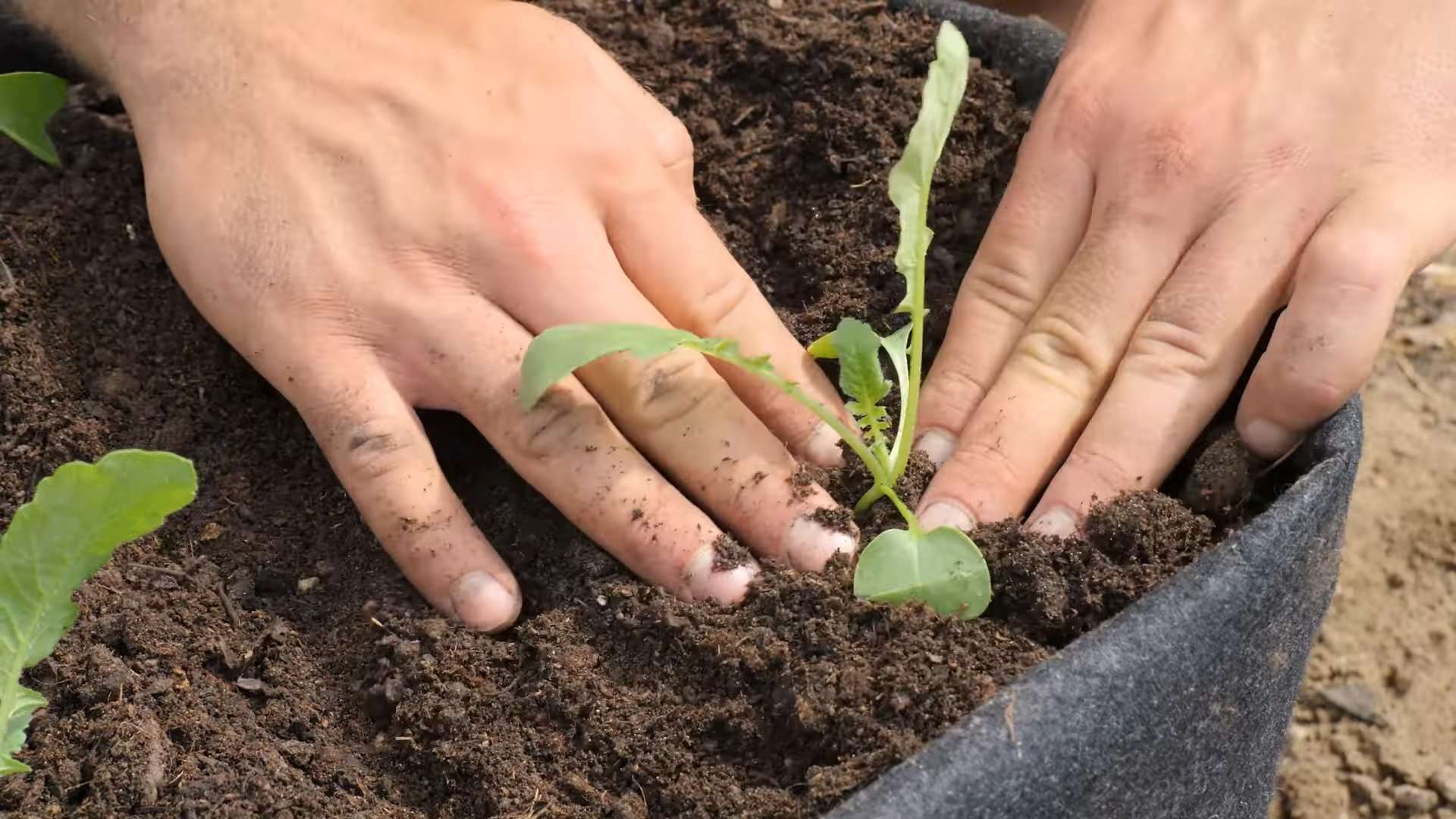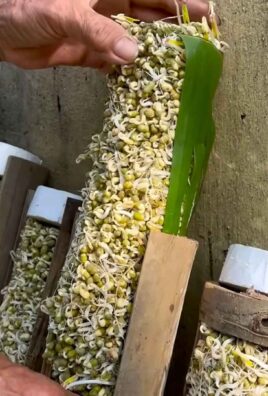Grow Radishes Indoors? Absolutely! Imagine plucking crisp, peppery radishes fresh from your own indoor garden, even when the snow is falling outside. Forget those bland, store-bought radishes – we’re talking about vibrant, flavorful gems you nurtured yourself. For centuries, humans have cultivated gardens indoors, from the hanging gardens of Babylon to the orangeries of European royalty, showcasing our innate desire to connect with nature, regardless of the season or climate.
But you don’t need to be royalty to enjoy the benefits of indoor gardening! In today’s busy world, many of us lack the space or time for a traditional outdoor garden. That’s where the magic of growing radishes indoors comes in. It’s a quick, easy, and incredibly rewarding way to add fresh, healthy produce to your diet, even if you only have a sunny windowsill. Plus, it’s a fantastic project for kids, teaching them about the wonders of plant life.
This DIY guide is your passport to radish-growing success. I’ll walk you through every step, from choosing the right container and soil to harvesting your delicious crop. Get ready to discover how simple and satisfying it is to grow radishes indoors and enjoy the taste of homegrown goodness all year round!

Grow Your Own Radishes Indoors: A Beginner’s Guide
Hey there, fellow gardening enthusiasts! Ever thought about growing your own radishes indoors? It’s surprisingly easy, rewarding, and a fantastic way to have fresh, peppery goodness right at your fingertips, even when the weather outside is frightful. I’m going to walk you through everything you need to know to successfully cultivate these little root veggies in the comfort of your own home. Let’s get started!
What You’ll Need
Before we dive into the nitty-gritty, let’s gather our supplies. Here’s a checklist of everything you’ll need to grow radishes indoors:
* **Radish Seeds:** Choose a variety that matures quickly. ‘Cherry Belle’ and ‘French Breakfast’ are excellent choices for indoor growing.
* **Containers:** You’ll need containers that are at least 6 inches deep. I prefer using plastic pots or even repurposed containers like yogurt tubs (just make sure they have drainage holes!).
* **Potting Mix:** Use a well-draining potting mix. Avoid using garden soil, as it can compact and hinder root growth.
* **Grow Lights (Optional but Recommended):** Radishes need plenty of light. If you don’t have a sunny windowsill, invest in a grow light.
* **Watering Can or Spray Bottle:** For gentle watering.
* **Small Trowel or Spoon:** For planting seeds.
* **Fertilizer (Optional):** A balanced liquid fertilizer can give your radishes a boost.
Choosing the Right Radish Variety
Not all radishes are created equal, especially when it comes to indoor growing. You want to select varieties that mature quickly and don’t require a ton of space. Here are a few of my favorites:
* **Cherry Belle:** These are classic, round, red radishes that mature in about 22 days. They’re reliable and easy to grow.
* **French Breakfast:** These are elongated, red radishes with a white tip. They have a milder flavor and mature in about 23 days.
* **Easter Egg:** This is a mix of different colored radishes (red, pink, purple, white) that mature in about 25 days. It’s a fun and colorful option!
* **Sparkler:** Similar to Cherry Belle, but with a small white tip. They mature in about 24 days.
Step-by-Step Planting Guide
Okay, now for the fun part – planting! Follow these steps to get your radish garden started:
1. **Prepare Your Containers:** Fill your containers with potting mix, leaving about an inch of space at the top. Gently pat down the soil to remove any air pockets.
2. **Sow the Seeds:** Radishes need space to grow, so sow the seeds about 1 inch apart and ½ inch deep. You can use your finger or a small spoon to make the holes.
3. **Cover the Seeds:** Gently cover the seeds with potting mix.
4. **Water Thoroughly:** Water the soil gently until it’s evenly moist. Avoid overwatering, which can lead to rot.
5. **Provide Light:** Place your containers in a sunny windowsill that receives at least 6 hours of direct sunlight per day. If you don’t have enough natural light, use a grow light. Position the grow light a few inches above the seedlings.
6. **Maintain Moisture:** Keep the soil consistently moist, but not soggy. Water when the top inch of soil feels dry to the touch.
Caring for Your Indoor Radish Garden
Once your radishes are planted, it’s important to provide them with the right care to ensure a bountiful harvest. Here’s what you need to do:
1. **Thinning:** Once the seedlings emerge (usually within 3-7 days), thin them out so that they are about 1-2 inches apart. This will give them enough space to grow. Snip the unwanted seedlings at the soil line with scissors rather than pulling them out, which could disturb the roots of the remaining plants.
2. **Watering:** Radishes need consistent moisture to grow quickly and develop crisp roots. Water regularly, especially during hot or dry weather. Check the soil moisture daily and water when the top inch feels dry.
3. **Lighting:** Radishes need plenty of light to thrive. If you’re using a grow light, keep it on for about 12-14 hours per day. Adjust the height of the light as the plants grow to ensure they’re getting enough light.
4. **Fertilizing (Optional):** If you want to give your radishes a boost, you can fertilize them with a balanced liquid fertilizer every 2-3 weeks. Follow the instructions on the fertilizer package. I usually dilute the fertilizer to half strength to avoid burning the roots.
5. **Temperature:** Radishes prefer cool temperatures, ideally between 60-70°F (15-21°C). Avoid placing them near heat sources, such as radiators or vents.
6. **Air Circulation:** Good air circulation helps prevent fungal diseases. Make sure your plants have enough space between them and that the air is circulating freely around them. A small fan can help improve air circulation.
Troubleshooting Common Problems
Even with the best care, you might encounter some problems while growing radishes indoors. Here are a few common issues and how to address them:
* **Leggy Seedlings:** This is usually caused by insufficient light. Make sure your plants are getting enough sunlight or grow light. You can also try moving them closer to the light source.
* **Slow Growth:** Slow growth can be caused by a variety of factors, including insufficient light, poor soil, or lack of nutrients. Make sure your plants are getting enough light, water, and fertilizer.
* **Cracked Roots:** Cracked roots are usually caused by inconsistent watering. Make sure you’re watering regularly and that the soil is consistently moist.
* **Pests:** Radishes are relatively pest-resistant, but they can sometimes be affected by aphids or flea beetles. If you notice any pests, you can try spraying them with insecticidal soap or neem oil.
* **Root Rot:** Overwatering can lead to root rot. Make sure your containers have drainage holes and that you’re not overwatering. If you suspect root rot, you can try transplanting the plants into fresh soil.
Harvesting Your Radishes
The best part of growing radishes is, of course, harvesting them! Radishes are typically ready to harvest in about 3-4 weeks, depending on the variety. Here’s how to tell when they’re ready:
1. **Check the Size:** The roots should be about 1 inch in diameter. You can gently brush away some of the soil to check the size.
2. **Check the Color:** The roots should be brightly colored and firm to the touch.
3. **Harvest:** To harvest, gently pull the radishes out of the soil. You can also use a small trowel to loosen the soil around the roots.
4. **Enjoy!** Wash the radishes thoroughly and enjoy them fresh in salads, sandwiches, or as a snack. You can also roast or sauté them.
Tips for a Bountiful Harvest
Here are a few extra tips to help you maximize your radish harvest:
* **Succession Planting:** Plant a new batch of seeds every 1-2 weeks to ensure a continuous harvest.
* **Rotate Your Crops:** Avoid planting radishes in the same container year after year. This can help prevent soilborne diseases.
* **Use Companion Plants:** Plant radishes alongside other vegetables, such as carrots or lettuce. Radishes can help deter pests and improve soil health.
* **Don’t Overcrowd:** Give your radishes enough space to grow. Overcrowding can lead to smaller roots and reduced yields.
* **Keep the Soil Loose:** Compacted soil can hinder root growth. Make sure the soil is loose and well-draining.
Recap of the Process
Let’s quickly recap the whole process:
1. **Gather your supplies:** Seeds, containers, potting mix, light source, watering can, trowel, and optional fertilizer.
2. **Plant your seeds:** Sow seeds 1 inch apart and ½ inch deep in well-draining potting mix.
3. **Provide light:** Ensure at least 6 hours of direct sunlight or 12-14 hours of grow light.
4. **Water regularly:** Keep the soil consistently moist, but not soggy.
5. **Thin seedlings:** Once they emerge, thin to 1-2 inches apart.
6. **Fertilize (optional):** Use a balanced liquid fertilizer every 2-3 weeks.
7. **Harvest:** When roots are about 1 inch in diameter and brightly colored.
Why Grow Radishes Indoors?
You might be wondering, why bother growing radishes indoors when you can just buy them at the store? Well, there are several compelling reasons:
* **Freshness:** Homegrown radishes are incredibly fresh and flavorful. They taste much better than store-bought radishes, which can

Conclusion
So, there you have it! Growing radishes indoors is not only achievable, but it’s also a remarkably rewarding experience. Forget those bland, store-bought radishes that lack the peppery punch you crave. With this simple DIY trick, you can cultivate a continuous supply of crisp, flavorful radishes right in the comfort of your own home, regardless of the season.
Why is this a must-try? Because it puts you in control. You control the soil, the light, and the watering, ensuring the best possible growing conditions for your radishes. You’ll be amazed at the difference in taste and texture compared to commercially grown varieties. Plus, it’s incredibly satisfying to harvest something you’ve nurtured from seed to table.
Beyond the basic method, there’s plenty of room for experimentation. Try different radish varieties! ‘Cherry Belle’ is a classic choice, but ‘French Breakfast’ offers a milder flavor and elongated shape. ‘Easter Egg’ radishes provide a vibrant mix of colors, adding visual appeal to your salads. You can also experiment with different soil mixes. While a standard potting mix works well, adding some compost or perlite can improve drainage and aeration. Consider using a liquid fertilizer diluted to half strength every couple of weeks to give your radishes an extra boost.
Another variation to consider is succession planting. Sow a small batch of seeds every week or two to ensure a continuous harvest throughout the growing season. This prevents you from being overwhelmed with radishes all at once and ensures a steady supply for your culinary needs.
Growing radishes indoors is a fantastic way to introduce children to the joys of gardening. It’s a quick and easy project that yields tangible results in just a few weeks, making it a perfect educational activity.
Don’t be intimidated if you’ve never grown anything before. Radishes are incredibly forgiving and relatively low-maintenance. Just follow the simple steps outlined in this guide, and you’ll be enjoying fresh, homegrown radishes in no time.
We wholeheartedly encourage you to give this DIY trick a try. It’s a simple, affordable, and incredibly rewarding way to enjoy fresh, flavorful radishes year-round. Once you’ve harvested your first batch, we’d love to hear about your experience! Share your photos, tips, and any variations you’ve tried in the comments below. Let’s build a community of indoor radish growers and inspire others to discover the joys of homegrown produce. Happy growing!
Frequently Asked Questions (FAQ)
What kind of container should I use for growing radishes indoors?
The ideal container for growing radishes indoors should be at least 6 inches deep to accommodate the root growth. A wider container is preferable to allow for more radishes to be planted. You can use plastic pots, terracotta pots, or even repurposed containers like plastic tubs or buckets. Ensure the container has drainage holes to prevent waterlogging, which can lead to root rot. A good rule of thumb is to allow at least 2-3 inches of space between each radish seed when planting.
How much light do radishes need when grown indoors?
Radishes require at least 6 hours of direct sunlight per day to thrive. If you don’t have a sunny windowsill, you can supplement with artificial grow lights. Fluorescent or LED grow lights are excellent options. Position the lights a few inches above the seedlings and keep them on for 12-14 hours per day. Insufficient light can result in leggy plants with small, underdeveloped roots. Rotate the plants regularly to ensure even light exposure on all sides.
What type of soil is best for growing radishes indoors?
Radishes prefer well-draining, loose soil that is rich in organic matter. A good potting mix specifically formulated for vegetables is an excellent choice. You can also create your own mix by combining equal parts of potting soil, compost, and perlite or vermiculite. The compost provides essential nutrients, while the perlite or vermiculite improves drainage and aeration. Avoid using heavy garden soil, as it can compact and restrict root growth.
How often should I water my indoor radishes?
Water your radishes regularly, keeping the soil consistently moist but not waterlogged. Check the soil moisture by sticking your finger about an inch deep. If it feels dry, it’s time to water. Water deeply until excess water drains out of the drainage holes. Avoid overhead watering, as it can promote fungal diseases. Instead, water at the base of the plants. The frequency of watering will depend on factors such as temperature, humidity, and the type of container you’re using.
How long does it take for radishes to mature when grown indoors?
Radishes are one of the fastest-growing vegetables, typically maturing in just 3-4 weeks. The exact time will depend on the variety and growing conditions. You can start harvesting when the radish roots are about 1 inch in diameter. Gently loosen the soil around the radish and pull it out. If the roots are still small, give them a few more days to grow.
What are some common problems when growing radishes indoors and how can I prevent them?
Some common problems include:
* **Leggy plants:** Insufficient light is the most common cause. Provide more light or move the plants to a sunnier location.
* **Small roots:** Overcrowding, poor soil, or lack of nutrients can contribute to small roots. Thin out the seedlings to provide more space, use a good quality potting mix, and fertilize regularly.
* **Root rot:** Overwatering can lead to root rot. Ensure the container has drainage holes and avoid overwatering.
* **Pests:** Aphids and flea beetles can sometimes infest indoor radishes. Inspect the plants regularly and treat with insecticidal soap if necessary.
Can I grow radishes indoors year-round?
Yes, you can grow radishes indoors year-round, provided you have adequate light and temperature control. Radishes prefer cooler temperatures (60-70°F), so avoid placing them near heat sources. With proper care, you can enjoy a continuous supply of fresh radishes regardless of the season.
What are the benefits of growing radishes indoors?
There are several benefits to growing radishes indoors:
* **Fresh, homegrown produce:** Enjoy fresh, flavorful radishes year-round, regardless of the weather.
* **Control over growing conditions:** You can control the soil, light, and watering, ensuring the best possible growing conditions.
* **Pest and disease control:** Indoor growing reduces the risk of pests and diseases.
* **Educational activity:** Growing radishes is a fun and educational activity for children and adults alike.
* **Space-saving:** Radishes can be grown in small spaces, making them ideal for apartment dwellers.
How do I know when my radishes are ready to harvest?
The best way to determine if your radishes are ready to harvest is to check the size of the root. Most radish varieties are ready to harvest when the root is about 1 inch in diameter. You can also gently brush away some of the soil around the base of the plant to get a better look at the root. If the root is the desired size, gently pull the radish from the soil. If it’s too small, give it a few more days to grow.
Can I eat the radish greens?
Yes, radish greens are edible and nutritious! They have a peppery flavor similar to the radish root. You can add them to salads, soups, or stir-fries. Be sure to wash them thoroughly before eating. Harvest the greens when they are young and tender for the best flavor.





Leave a Comment